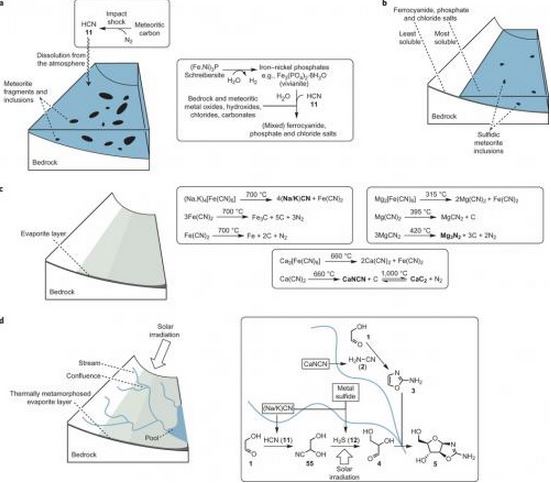Did Chemists Just Solve the Mystery of How Life Began on Earth?


Did you ever wonder- how life began on earth? Was it created by a long series of chemical reactions that led to evolution? Or, was it caused by an impact of a celestial body? All that aside, a team of chemists have claimed to solve the riddle of how life begun on earth by mapping out a series of chemical reactions that led to the formation of two or three carbon sugars, amino acids, ribonucleotides and glycerol- that are the building blocks of proteins and ribonucleic acids and also for allowing for the creation of lipids that form cell membranes. All from two simple reactants – hydrogen sulphide, hydrogen cyanide and UV light!
Recent debate among scientists has resulted in a schism of three opinions: RNA world advocates, metabolism-first supporters and those who believed that cell membranes were developed first.
The scientists have found a way to claim all the three opinions both right and wrong – they produced in their paper that life has evolved from hydrogen sulphide, hydrogen cyanide and UV light, and those building blocks could have existed at the same time. Using just these three components, they have managed to produce more than 50 nucleic acids – the precursors to DNA and RNA molecules.
Also read: NASA Making the “Warp Drive” – Faster than Light Spaceship
Early meteorites carried with them ingredients that could react with nitrogen in the atmosphere to produce a lot of nitrogen. By dissolving in water, it could have very easily come into contact with hydrogen sulfide, while being exposed to ultraviolet light from the sun. And that, they claim, would have been all that was needed to get things going.
If this claim about how life began on earth is confirmed, it could change the way we look at evolution. It could possibly be the greatest achievement of our time.
Source: Phys.org
Also read: How Albert Einstein Started His “Lightspeed” Journey
Is the mystery of how life began on earth finally solved? Tell us your views below!
Stay tuned for latest science and technology news from fossBytes!







